Archives for October 2013
Calling all wily women, sly guys, assorted freaks and zombies:
Robert Wise casts a spell with subtlety, smarts, superb acting
The Haunting/1963/Argyle Enterprises, MGM/112 min.
From Shirley Jackson’s eerie, intellectual ghost story “The Haunting of Hill House” director Robert Wise and screenwriter Nelson Gidding weave a classic supernatural thriller, a shocker without gore, a ghost movie seemingly without ghosts. Or is it?
In “The Haunting,” poltergeist investigator John Markway (Richard Johnson) and his group of spook watchers (Claire Bloom, Russ Tamblyn and Julie Harris) are ensconced in a notorious old dark house together. Harris gives a movie-stealing performance as repressed spinster Nell Lance, who succumbs to Hill House’s shivery spell and terror-laced eroticism. Like Jack Nicholson in “The Shining,” Harris makes you feel the story’s terror – the menace and the entrapment of Hill House as Nell is pulled into the evil of the haunted domicile’s very dark past.
The cast is well nigh perfect, from Johnson’s enthusiastic and charming investigator, Bloom’s ambiguous, fancily severe Greenwich Village lesbian, Julie, to Lois Maxwell (Miss Moneypenny of the James Bond series) as Mrs. Markway.
Tamblyn, who will be present for discussion at the 7 p.m. Tuesday screening of “The Haunting” in Westwood, plays smart-alecky nonbeliever Luke Sanderson. Tamblyn was reteaming here with director Wise, who had guided the actor to the highlight of his career, as Jet gangleader Riff in the 1961 Best Picture Oscar winner “West Side Story.”
Wise’s movie is quite faithful to Jackson’s acclaimed novel. The dialogue is literate and tense. The movie’s tasteful production design and the crystal-sharp black and white cinematography (by Davis Boulton) give this picture, shot in England, a classic look. It’s the kind of brainy, spooky cinematic treat Wise might have whipped up for producer Val Lewton in the ’40s, in their RKO prime time of “The Body Snatcher” and “The Curse of the Cat People” if they’d only had this kind of budget.
Roman Polanski once named Wise’s “The Haunting” as one of his favorite movies. It’s a shame that Polanski didn’t direct the 1999 remake of “The Haunting,” which was messed up by the producers and director Jan De Bont, and not helped by its big budget and gaudy effects. Subtlety, intelligence and superb acting are what cast the spell for Wise and company. Polanski probably would have brought all that back and made the movie sexy to boot – something the 1963 “Haunting” doesn’t really need.
Film noir fashionistas in the spotlight
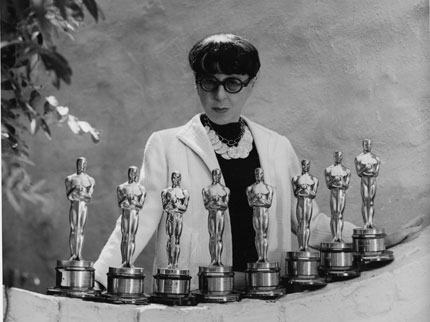
Edith Head worked on film noir titles such as “Double Indemnity,” “Sunset Blvd.,” “Rear Window” and “Vertigo.”
Happy birthday, Edith Head! She was born October 28, in San Bernardino, Calif. In her 60-year career, at Paramount and Universal, she worked on more than 1,131 films, received 35 Academy Award nominations and won eight Oscars, more than any other woman. (Walt Disney, with 22 Oscars, holds the record for a man.)
The exhibition From Philadelphia to Monaco: Grace Kelly Beyond the Icon opens today at the James A. Michener Art Museum, near Philadelphia.
‘The Haunting’ marks 50 years with screening in Westwood
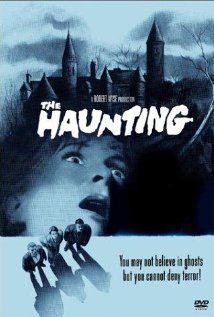 Celebrating its 50th anniversary, “The Haunting” will screen at 7 p.m. Tuesday, Oct. 29, at the Regent Theatre in Westwood.
Celebrating its 50th anniversary, “The Haunting” will screen at 7 p.m. Tuesday, Oct. 29, at the Regent Theatre in Westwood.
Dr. John Markway (Richard Johnson) is psyched to spend a few weeks at a 19th Century New England mansion – need I say haunted? – in order to study its creepiness. As you might suspect, things don’t go to plan. Also starring Julie Harris, Claire Bloom and Russ Tamblyn, who will attend Tuesday’s screening as a special guest. The evening is also a chance to pay tribute to Julie Harris, who died this summer.
At the time of its release, critic Judith Crist called the film “a thoroughly satisfying ghost story for grownups … completely contemporary in its psychological overtones and implications.”
Nelson Gidding wrote the script based on a Shirley Jackson novel; Robert Wise directs. Jan de Bont remade “The Haunting” in 1999, starring Liam Neeson, Catherine Zeta-Jones, Lili Taylor and Owen Wilson.
You can buy tickets here.
Moving, intimate ‘Blue’ delivers on its prizewinner promise
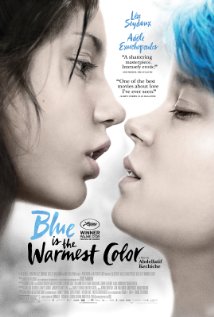 Blue Is the Warmest Color/2013/Sundance Selects/179 min.
Blue Is the Warmest Color/2013/Sundance Selects/179 min.
I’m going to start with a sort of Spoiler Alert: “Blue Is the Warmest Color” is not a neo-noir, not even close. But I was curious about the movie because it created quite a buzz at this year’s Cannes Film Festival and snared the top prize there, the Palme d’Or.
Directed by Abdellatif Kechiche, “Blue” is a coming of age/love story that follows a teenager named Adèle (Adèle Exarchopoulos) as she navigates a brief affair with a boy and a lengthy intimate relationship with an older woman Emma (Léa Seydoux). Adèle also finishes school, finds a job as a teacher, makes mighty platters of pasta and sheds a lot of tears. In other words, it’s a richly detailed character study and an intense, unhurried exploration of a charming but ordinary woman’s everyday life. One day ends, another starts.
At nearly three hours long and containing rather graphic sex scenes, this is perhaps not the movie to go to with Aunt Ginger. I was a bit on the fence about it myself. But, happily, “Blue” never dragged or felt gratuitous, tasteless or solipsistic. What made it so engrossing for me was the sublimely naturalistic performances from everyone in the cast and a story that, while sometimes mundane, is also largely devoid of clichés. Moving and memorable, “Blue” delivers on its prizewinner promise.
“Blue Is the Warmest Color” opens today in LA and New York. In French with English subtitles.
American Film Institute announces festival lineup
We at FNB are thrilled to be attending the AFI Fest 2013 presented by Audi. The fest runs Nov. 7-14 in Hollywood.
Organizers recently announced the schedule: http://afifest.afi.com/sections. Among the highlights: Agnès Varda is guest artistic director and her 1962 film “Cleo from 5 to 7” will screen at the fest. (There will be a conversation with Varda beforehand.)
Prescription for retro glamour: A look back at Schwab’s
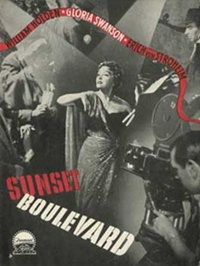 Heading to the West Hollywood Rite-Aid to do a little schmoozing? Not bloody likely. But, in Tinseltown’s golden age, Schwab’s Pharmacy, at 8024 Sunset Blvd., ranked as one of the city’s top spots to meet, greet, mix and mingle.
Heading to the West Hollywood Rite-Aid to do a little schmoozing? Not bloody likely. But, in Tinseltown’s golden age, Schwab’s Pharmacy, at 8024 Sunset Blvd., ranked as one of the city’s top spots to meet, greet, mix and mingle.
A program Saturday at the Egyptian Theatre highlighted the pivotal role Schwab’s played in Hollywood networking from the 1930s to the 1960s. Teacher/history buff Marc Chevalier delivered a photo-driven presentation, followed by a short that was filmed at Schwab’s to promote a 1946 bio-pic, “The Jolson Story,” and the exquisite movie “Sunset Blvd.” (1950, Billy Wilder), which features the drugstore in a key scene.
Chevalier started his talk with a cherchez la femme angle. The property – on the south side of Sunset Boulevard, between Laurel Avenue and Crescent Heights – first belonged to Dr. George E. Paddleford and his wife, Genevieve McKinney Toomey Teal Paddleford, a “international adventuress and love pirate,” with a string of duped husbands.
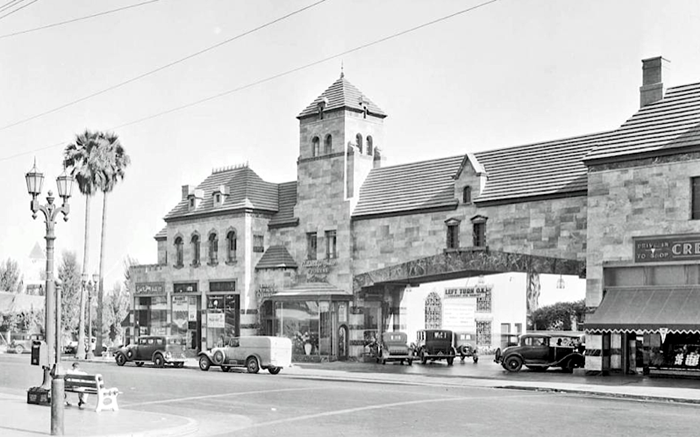
The Sunset Medical Building in the 1930s. Schwab’s was to the right of the window awning (far right).
The Paddlefords owned lots 1, 2 and 29 of the Crescent Heights tract and built a mansion on lot 2. Fond of giving Dr. Paddleford’s expensive cuff links and other valuable belongings to her lovers, Genevieve drew her husband’s ire and the couple divorced around 1920. She left for Europe where she continued to live the high life, charm men, court scandal, oh and steal stuff from Ritz-Carlton hotels.
Dr. Paddleford (an associate of oil magnate Edward L. Doheny) sold the property and in 1931 architects Alvan Norstrom and Milton Anderson designed the Sunset Medical Building for developers C.H. Thomsen and W.L. Easley. The year before, for the same developers, Norstrom and Anderson designed a building directly across the street. It’s in use today as the Laugh Factory and Greenblatt’s Deli.
Despite the prosaic name (it became known as the Crescent Heights Shopping Center and later simply “The Corner”), the new building turned out to be a modern-day palace. Its front and side facades were clad in dark tan marble from Southern France and trimmed in rosso levanto Italian marble. (At the time, the only other commercial structure in Los Angeles that boasted so much marble was downtown’s Merritt Building from 1915.) Inside The Corner, rooms were paneled and floored in mahogany; some had terrazzo marble floors. Doctors’ and dentists’ offices were on the second level. A covered-bridge walkway allowed patients to cross from one wing to another. The back court had a 30-space parking lot.
Nearby was the Spanish-Moorish style Garden of Allah apartment complex, originally owned by actress Alla Nazimova in 1919; the Garden was torn down in 1959. Many residents from this chic residence supported businesses at The Corner.
Norstrom and Anderson’s marble stunner housed several merchants on the ground floor, including Richard Talmadge, former actor and stuntman for Douglas Fairbanks, who ran a flower shop, and the owner of the Crescent Heights Market, Ben Ruben, known for insulting his customers at no extra charge. Howard Hughes treated his girlfriends to makeovers at the beauty salon.
In 1932, the Schwab brothers (Bernard, Leon, Jack and Martin) took over a failing drugstore in the complex; they would eventually own six pharmacies. But Schwab’s on Sunset wasn’t just a place to drop off a prescription or buy toiletries. Open from 7 a.m. to midnight, the gathering spot served meals as well as soda-fountain drinks. The store had five phone booths and frequently offered automatic credit. Customers could also buy high-end liquor, tobacco, chocolate, perfume and cosmetics. There was no charge for deliveries.
In the movie “Sunset Blvd.,” William Holden’s character, a struggling screenwriter named Joe Gillis, tells us the pharmacy is his headquarters, explaining: “That’s the way a lot of us think about Schwab’s. Kind of a combination office, coffee klatch and waiting room. Waiting, waiting for the gravy train.” (Though it would seem the ideal location shoot, Wilder had the interior recreated and filmed on a Paramount lot.)
Arguably, what made Schwab’s the place to network and nosh was the fact that journalist/actor/producer Sidney Skolsky wrote his Photoplay column “From a Stool at Schwab’s” in a second-floor office, by arrangement with the Schwab family.
Among Skolsky’s many talents was a knack for nicknames and he dubbed the drugstore Schwabadero’s, an allusion to the Trocadero nightclub down the street. (Even more famously, in 1934, he was the first journalist to write a story using Oscar to refer to the Academy Award.) As a producer on the 1946 movie “The Jolson Story,” it was Skolsky’s idea to shoot the after-party at Schwab’s and use the footage as a publicity short.
Robert Mitchum, Clark Gable, F. Scott Fitzgerald, Mickey Cohen, Gloria Swanson, Judy Garland, the Marx Brothers, Cesar Romero and Shelley Winters were regular Schwabadero’s customers. Marilyn Monroe, another loyal patron, reportedly left messages for Skolsky, under the name Miss Caswell. Charlie Chaplin and Ava Gardner stopped in and made their own milkshakes.
Though it’s widely thought that Lana Turner was discovered sipping a soda at Schwab’s, in fact it was at the Top Hat malt shop, several blocks east on Sunset, that in 1937, at age 16, she attracted the attention of Hollywood Reporter publisher William Wilkerson.
By the time Schwab’s had its closeup in “Sunset Blvd.,” Russian immigrant/Beverly Hills businessman Martin Belousoff owned the property. In 1949, Googie’s coffee shop, designed by architect John Lautner in Space Age/midcentury modern style, was built nearby and served customers such as James Dean, Marlon Brando and beat-generation poets. (Googie’s lasted until 1989.)
Compared with Googie’s, Schwab’s looked passé and in 1955 Belousoff decided to remodel inside and out, commissioning architects Louis Armet and Eldon Davis for the job. But not long after Schwab’s updated, new Sunset Strip venues were opening up and gaining popularity with aspiring stars and ’60s hipsters.
Schwab’s, which had been in business for 50 years and earned worldwide fame as a Hollywood hive of activity, closed its doors in 1983 and was torn down in 1988. But it remains Hollyood’s most famous drugstore – a legendary place to sip sodas, schmooze, spot stars and, like many a prospective Lana Turner, strut your stuff.
‘Kill Your Darlings’ tells noirish backstory of beat poets
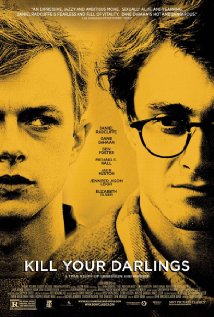 Kill Your Darlings/2013/Killer Films/104 min.
Kill Your Darlings/2013/Killer Films/104 min.
Thinking about the 1940s, an era largely defined by World War II vets and the women they came home to, it’s easy to forget the generation just after – the post-war crop of young people on the cusp of adulthood as the long battles finally ended and the course of history forever changed.
I was reminded of that watching “Kill Your Darlings,” a dark story about poet Allen Ginsberg (Daniel Radcliffe), the relationships he forged with other beat-generation writers while at Columbia University and his connection to a 1944 murder.
As a student, Ginsberg clashes with academic convention. On the personal front, he quickly falls under the romantic spell of fellow student Lucien Carr (Dane DeHaan), a feline beauty: polished, urbane, subversive and jaded. Through Carr, Ginsberg meets the rugged and dynamic, as well as older and more established, Jack Kerouac (Jack Huston) and the bizarre, dope-addicted literateur William Burroughs (Ben Foster). On the fringe of their circle is Carr’s mentor-turned-stalker (and one-time lover?), academic David Kammerer (Michael C. Hall).
Director and co-writer John Krokidas masterfully renders the period and its prejudices, and elicits exceptionally good performances from his energetic cast – they are all memorable, especially Ben Foster as Burroughs. Jennifer Jason Leigh, as Ginsberg’s mother Naomi, is also a standout. Though it doesn’t play as a thriller (it’s not trying to, particularly), “Kill Your Darlings” tells the tense, disturbing, sometimes-moving backstory of a few inspired and reckless geniuses who redrew the boundaries of literary expression.
“Kill Your Darlings” opens today in LA.
Hollywood Dogs highlighted in well heeled new book
There’s a photospread in Vanity Fair on a new book from ACC Editions called Hollywood Dogs: Photographs from the John Kobal Foundation. Looks like a fun book.
Snuffy, Frank Sinatra’s four-legged co-star in the 1957 musical “Pal Joey,” reportedly aced his audition. Asked to eat a bagel off a plate, the Cairn terrier took it in his mouth, dipped it in some soup, and ate the soggy part.
Also shown here: Marilyn Monroe and her Maltese, whom she named Mafia (the dog was a gift from Sinatra), and Grace Kelly with her Weimaraner.
Lake, Ladd and Chandler script help ‘Blue Dahlia’ bloom
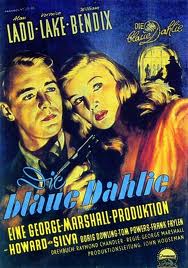 The Blue Dahlia/1946/Paramount/96 min.
The Blue Dahlia/1946/Paramount/96 min.
Sitting here waiting for the Tigers game to start and for the bf to make dinner, I keep thinking of food metaphors. For instance: watching “The Blue Dahlia” is like ordering a blue-cheese burger at a steakhouse – tasty fare, but not quite as satisfying as filet mignon. So I have a one-track mind. I’m hungry.
That does, however, sum up “The Blue Dahlia” – it’s a pretty good yarn and in the hands of a more stylish director, instead of comedy specialist George Marshall, it might have been a true gem. In Marshall’s hands, the visuals are ho-hum, there’s not much atmosphere and there are several moments where the pace seems to idle. Overall, it feels a bit dated.
On the plus side, Veronica Lake and Alan Ladd lead a strong cast and Raymond Chandler received an Oscar nom for his original screenplay. (It lost to the British psychological drama “The Seventh Veil” by Muriel and Sydney Box.) Also, “The Blue Dahlia” has several famous location shots, such as the Brown Derby, and in 1947 the film’s title gave rise to the name of one of Hollywood’s most nefarious real-life mysteries.
Ladd plays an ex-Navy bomber pilot named Johnny Morrison, who arrives in Los Angeles with two pals from the Navy. The three jump off the bus at Hollywood Boulevard and head to the nearest bar. Buzz (William Bendix) has sustained war injuries (he has a plate in his skull) and isn’t thinking too clearly; his foil is calm and level-headed George (Hugh Beaumont, aka Ward Cleaver on “Leave it to Beaver.”)
Next up for Johnny is a reunion with his wife Helen (Doris Dowling) at her bungalow apartment on Wilshire Boulevard. Not exactly a picture of wifely devotion, raven-haired, rye-chugging Helen is hosting a raucous party that night. (Doris Dowling’s real-life older sister Constance Dowling played shady lady Mavis Marlowe in the film noir “Black Angel,” also from 1946, based on a Cornell Woolrich novel and directed by Roy William Neill.)
After Helen confesses that her drinking led to the death of their son, Johnny pulls his gun out and considers using it, but changes his mind. Instead he drops the gun on an armchair, next to a blue dahlia flower from Helen’s, um, companion, slick and sleazy Eddie Harwood (Howard Da Silva). Harwood owns the Blue Dahlia nightclub, hence he hands out flowers.
Johnny heads out into the rainy night and hitches a ride with Joyce Harwood (Lake), a chilly blonde goddess with an air of mystery. She’s also Eddie Harwood’s estranged wife.
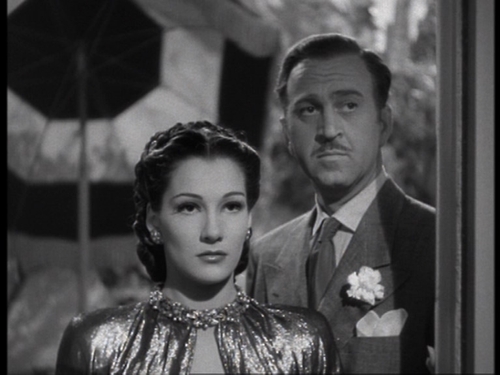
Helen (Doris Dowling) would rather drink a beer than win Mother of the Year. Her chum Eddie (Howard Da Silva) owns the Blue Dahlia nightclub.
Well, as you know, no good deed goes unpunished in film noir and leaving the gun behind wasn’t the wisest decision on Johnny’s part. The next morning Helen is dead and Johnny tops the list of suspects. Others on the list include disloyal Eddie Harwood, the oft-confused and easily excited Buzz, who paid Helen a visit the night of her death, and ‘Dad’ Newell (Will Wright), the seedy house detective at Helen’s apartment complex.
In Chandler’s original script, Buzz did the deed but painting a vet in bad light would be courting disaster with the censors so Chandler had to revamp the story and find a new villain. Reportedly, Chandler, who was fond of drinking like a fish, locked himself away one weekend and got even more smashed than usual in order to cobble together the revised script, which the studio needed in a hurry because Ladd was called for military service.
A highlight of the flick is the wry banter between Ladd and Lake – this was the third of four films they made together (preceded by “This Gun for Hire” and “The Glass Key,” and followed by 1948’s “Saigon”) and by this time they have it down. Ladd snarls and pushes her away, Lake purrs and turns her nose up, aloof and amused.
“The Blue Dahlia” also played a part in the aftermath of Hollywood’s most famous unsolved murder: Elizabeth Short, a pretty girl from a Boston suburb who came to Hollywood looking for adventure or a husband, whichever came first. Short was brutally killed; her mutilated body was found on Jan. 15, 1947.
As the police investigation progressed, Short became widely known as the Black Dahlia. Some say a Long Beach bartender dubbed her the Black Dahlia in 1946 because of her sometimes-theatrical appearance (acquaintances said she liked wearing heavy makeup and flowers in her hair when she dressed up); others attribute the moniker to journalists covering the grisly case. Either way, “The Blue Dahlia” movie triggered the nickname.
“The Blue Dahlia,” with its smart writing and solid acting, is required film noir viewing, despite its flaws. And I almost forgot – there’s a great dry moment when the maid finds Helen’s body. No screaming or wringing of hands for this hard-living broad, just an “Oh brother” and a long sigh.






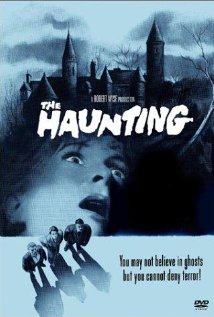
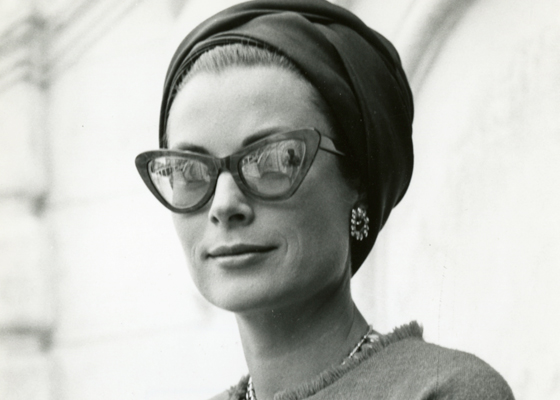
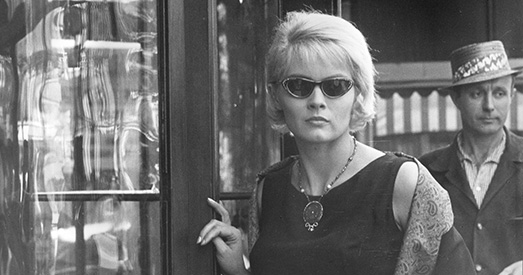
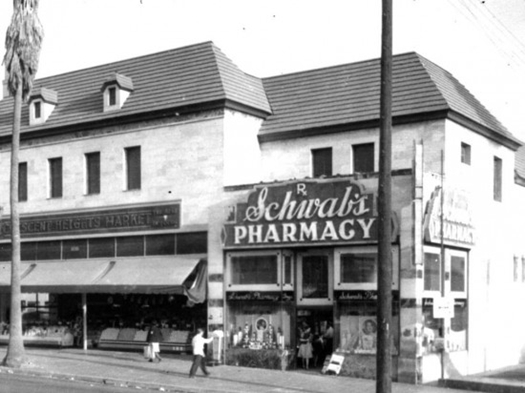
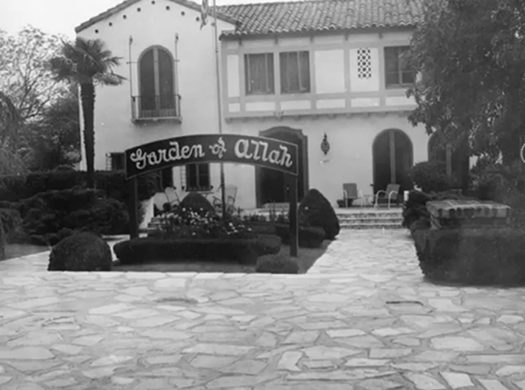

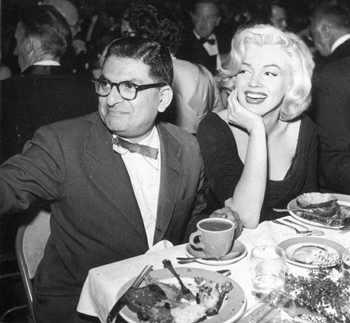
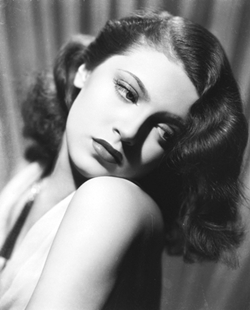
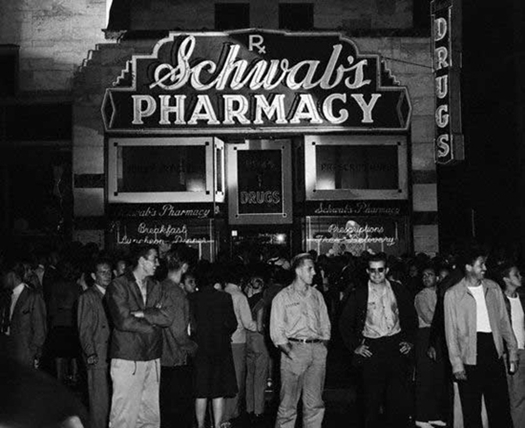
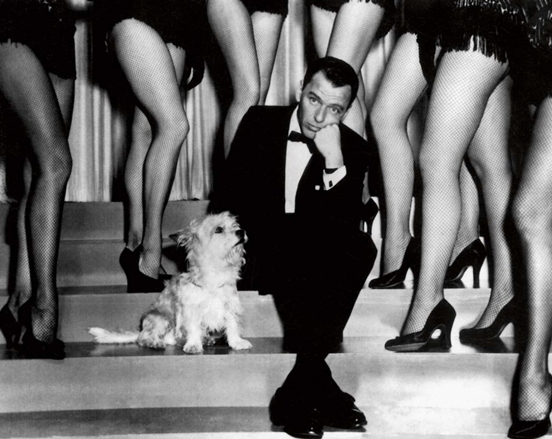
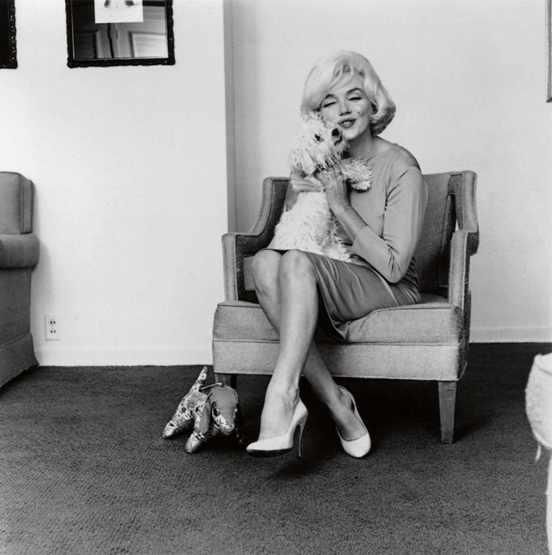
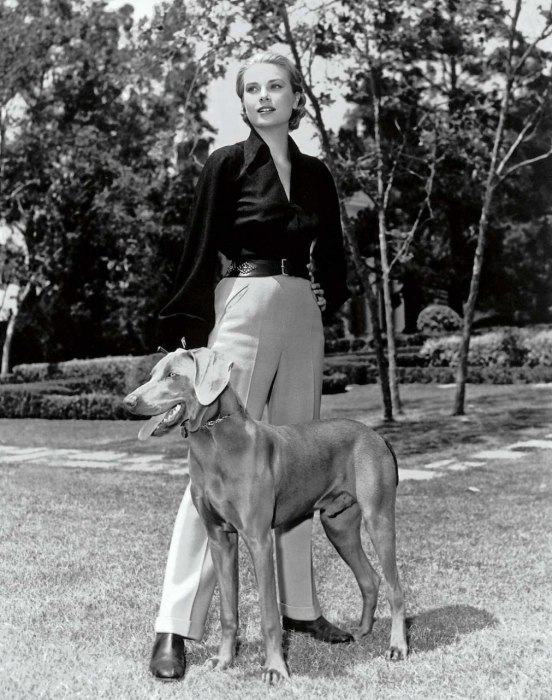
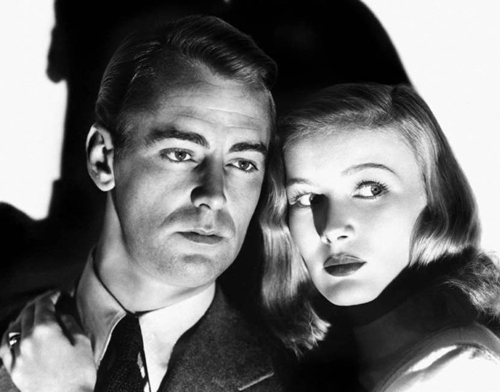
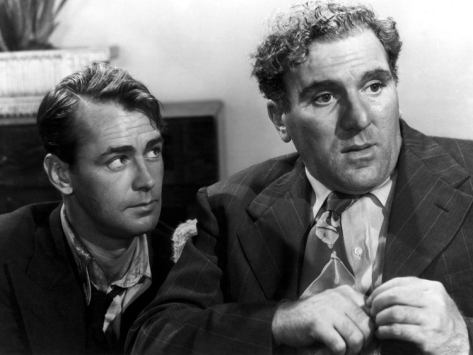
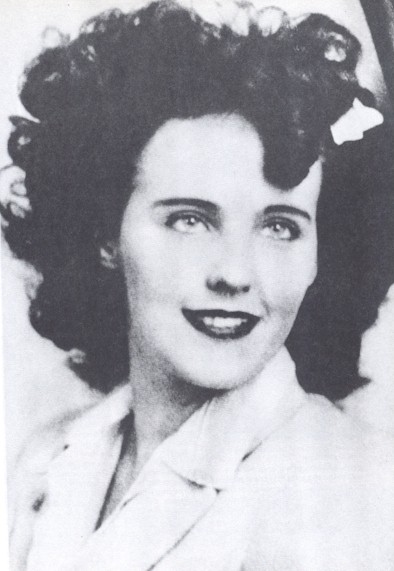





From FNB readers